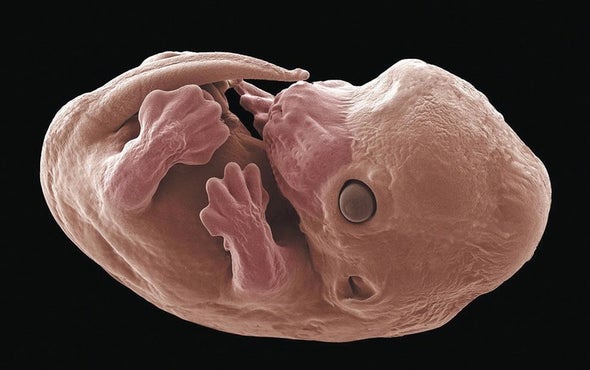Developmental biologist Dr. Alberto
Rosellió-Díez, from Medicine Institute at Monash University and Dr. Isaac S.
Kohane, from MIT-Harvard Division of health Sciense, have been trying to understand how tissue growth,
during embryonic development, is related to the cancerous tumors. Studies post
in the Scientific American recently
linked these two processes together stating that “cancer cells are the same
programmed genetic instructions active during various stages of embryonic and
fetal development.” Kohane believes that by observing these growth processes,
they will be able to have a better understanding of how embryonic development
contributes to cancer growth later on in life.
First, to better understand how genetic
instructions program tumors to grow in adults, Díez and his team needed
to study tissue growth during the embryonic development. In order to do this
the team created a model in mice, using prior knowledge of cell modification, to
come up with a mechanism that inhibited cell growth. Using this mechanism, the
team injected the rear limb of a mouse with a growth inhibitor and watched to
see how the rest of the embryo reacted. During this process the rear limb
stopped growing and the rest fetus reacted by slowing down its growth as well. It
turned out that when the scientists stopped the rear limb from growing, the placenta
also reacted by signaling the other limbs to stop growing as well, allowing the
slower one to catch up. The placenta, which acts basically as an
immune-endocrine organ, mediated the growth process of the other limbs allowing
for symmetrical growth of all the limbs. The growth inhibitor allowed the scientists
to see for the first time how tissue growth is turned on and off by
instructions, programmed during embryonic development. An article in Scientific American discusses these findings in further detail. The results obtained by
Díez and his team seem to be promising and they may even help doctors like
Kohane explain the effects that these embryonic instructions have on cancer.
Kohane, who is currently working with tumors, discovered that gene signatures
during the third trimester mirrored growth rates in cancer. Among some of these tumors that exhibited these signatures were ardenocarcinoma, T cell lymphomas, and thyroid cancer. Using these signatures and the research from embryonic development, Kohane hopes to be able to see
early warning signs of cancer. Tumors, which are generic terms for neoplasms
usually grow rapidly and are able to invade surrounding tissue. Scientists and doctors have observed a remarkable similarity between the behavior of embryos
and tumors. Lloyd J. Old, a chairman of the Ludwig Institute for Cancer
Research, stated “If you’ve ever seen the trophoblast invading the uterus, it
invades, spreads, creates a blood supply. It also suppresses the maternal
immune system… All of those are characteristics of cancer.” These new
discoveries and observations have given us a much better understanding of
embryonic development and its relationship to cancer. However, the research is
still in its infancy stage and there is still a lot of speculation on how
things work, but with breakthroughs like Dr. Rosellió-Díez and Kohane's research, it
might not be long until we can treat cancer much more effectively.

No comments:
Post a Comment